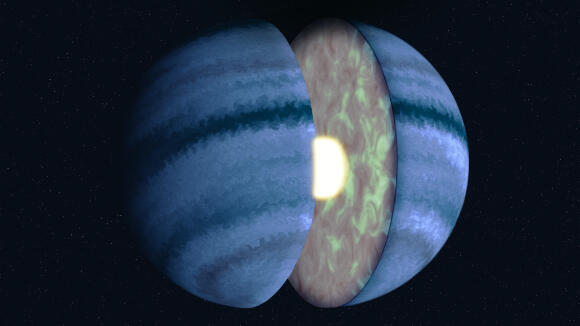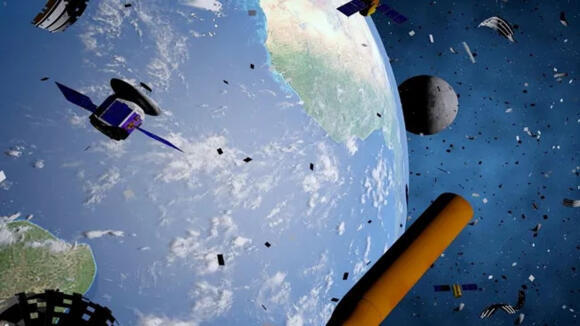Space belongs to seniors
Blue Origin has resumed its space tourism flights to the edge of space after a nearly two-year hiatus, launching six passengers on a suborbital flight reaching an altitude of 105 kilometers. Notably among them was retired U.S. Air Force pilot and sculptor Ed Dwight, who, at 90 years and just over eight months old, made history as the oldest person to fly into space.
3 View gallery


Ed Dwight celebrating as he exits the Mission NS-25 crew capsule, upon landing near the Blue Origin base near Van Horn, Texas, on May 19, 2024
(Photo: HANDOUT / BLUE ORIGIN / AFP)
For Dwight, the flight marked a poignant completion of a circle: In the early 1960s, U.S. President John F. Kennedy directed NASA to integrate him into astronaut training in response to protests over the exclusion of non-white astronauts.
However, Dwight fell victim to the harsh realities of racial struggles in the United States, being thrust into the space program without proper training and could not assimilate. He was officially dismissed after President Kennedy's assassination in November 1963. It would be another two decades before the United States would send its first black astronaut into space.
Dwight broke the record of actor William Shatner, who also reached the edge of space on a Blue Origin flight in 2021, at the age of 90 years and six months. The oldest person to have orbited the Earth so far remains veteran American astronaut John Glenn, who in 1998 convinced NASA to include him on a space shuttle flight at the age of 77.
Besides Dwight, the flight included five other passengers: Mason Angel, Sylvain Chiron, Kenneth Hess, Carol Schaller, and Gopi Thotakura. As far as is known, all of them paid the full fare for their tickets. While Blue Origin keeps pricing details undisclosed, estimates peg ticket prices between a quarter to half a million dollars per person. Dwight's flight was funded by a private foundation and a non-profit organization.
To date, the company has flown 37 private astronauts, compared to 26 by its competitor in the space tourism market, Virgin Galactic, which is currently facing significant financial difficulties.
This was Blue Origin's first space tourism flight after a nearly two-year hiatus, following a setback in September 2022, when its New Shepard booster exploded during the launch of an unmanned spacecraft. The US Federal Aviation Administration (FAA) authorized the company to resume flights only after it has implemented over 20 fixes to the booster, spacecraft, and launch procedures.
Taking out the trash
A report from NASA suggests that handling the large amounts of space debris in Earth's orbit may not be as expensive as previously estimated. The report, titled "Cost and Benefit Analysis of Mitigating, Tracking, and Remediating Orbital Debris," was authored by researchers at NASA's Office of Technology, Policy, and Strategy (OSTP) as a follow-up to an initial report published last year. The new document proposes ways for assessing the costs of space debris management including strategies like shielding satellites from impacts by small debris fragments.
Space debris encompasses all man-made objects that are not active as satellites or spacecraft in Earth's orbit: from defunct satellites and rocket components to sizable fragments from space collisions, even down to tools discarded by astronauts and minuscule particles such as frozen fuel droplets or paint flakes. Traveling at tens of thousands of kilometers per hour, these objects pose risks of significant damage to operational spacecraft or create further debris upon collision with other fragments.
“This study allows us to start to answer the question: What are the most cost-effective actions we can take to address the growing problem of orbital debris?” said Jericho Locke, the lead author of the report. “By measuring everything in dollars, we can directly compare shielding spacecraft to tracking smaller debris or removing 50 large pieces of debris to removing 50,000 smaller ones.”
The researchers considered not only the direct costs of each approach but also the indirect costs, such as fuel consumption and reduced operational lifespan when activating a satellite's engine to change its orbit in order to avoid a collision with space debris.
In recent years, several space debris removal missions have been planned, including one by Astroscale, a Japanese-owned international corporation. Its development center in Tel Aviv leads the development of detection and docking technologies, which are essential for both satellite lifespan extension in orbit and debris identification and retrieval.
The company won a Japanese government contract to execute a mission by 2028, Astroscale aims to demonstrate its ability to closely inspect, photograph, and analyze a large defunct satellite in preparation for its removal from orbit.
However, such missions are expected to carry hefty price tags. Hence, NASA underscores the necessity of evaluating costs before embarking on large-scale solutions. "This study is part of NASA's work to rapidly improve our understanding of that environment as outlined in NASA's recently released Space Sustainability Strategy, by applying an economic lens to this critical issue," said Charity Weeden, head of the OSTP.
Exploring cotton-candy exoplanets from within
The planet Wasp-107b was discovered in 2017 orbiting a medium-sized star, roughly two hundred light-years away from us. Its volume is similar to that of Jupiter, but its mass is only a tenth that of the gas giant, leading researchers to estimate that it may have a cotton-candy-like texture. Its close proximity to its sun causes it to complete an orbit in less than six Earth days. As a result, its atmosphere is extremely hot—standing at around 500 degrees Celsius.
3 View gallery


The planet Wasp-107b as envisioned by an artist
(Photo: ROBERTO MOLAR CANDANOSA/JOHNS HOPKINS UNIVERSITY)
In a study published last month, researchers managed to analyze the composition of Wasp-107b's atmosphere, and even its internal composition, using measurements from the James Webb Space Telescope. They were surprised to find that the methane (CH4) concentration in Wasp-107b's atmosphere was a thousand times lower than prior estimates, while its core was found to be much weightier than anticipated.
Using the space telescope's sensitive spectrometers, which analyze the composition of light wavelengths, which is altered by the chemical substances from which they are emitted or pass through, the researchers found that the Wasp-107b's atmosphere is abundant in sulfur dioxide (SO2), water vapor, carbon dioxide (CO2), carbon monoxide (CO), and heavy elements. However, methane levels were significantly lower than anticipated, compared to gas giants in our solar system.
The researchers hypothesize that Wasp-107b may have once had much more methane, but it decomposes due to its high atmospheric temperatures, creating the carbon oxides, the levels of which are indeed higher than expected. According to the researchers, this phenomenon can be attributed not only to the heat from the planet's sun, but also to an internal heat source, likely triggered by the strong gravitational forces of its parent star.
"We had never been able to study this mixing process in an exoplanet atmosphere in detail, so this will go a long way in understanding how these dynamic chemical reactions operate," said David Sing, the head of the research team and Professor of Earth and Planetary Sciences at Johns Hopkins University in the US. "This is now something we can do for lots of different gas planets in various systems. It's something we definitely need as we start looking at rocky planets and biomarker signatures," he added.
Content distributed by the Davidson Institute of Science Education


